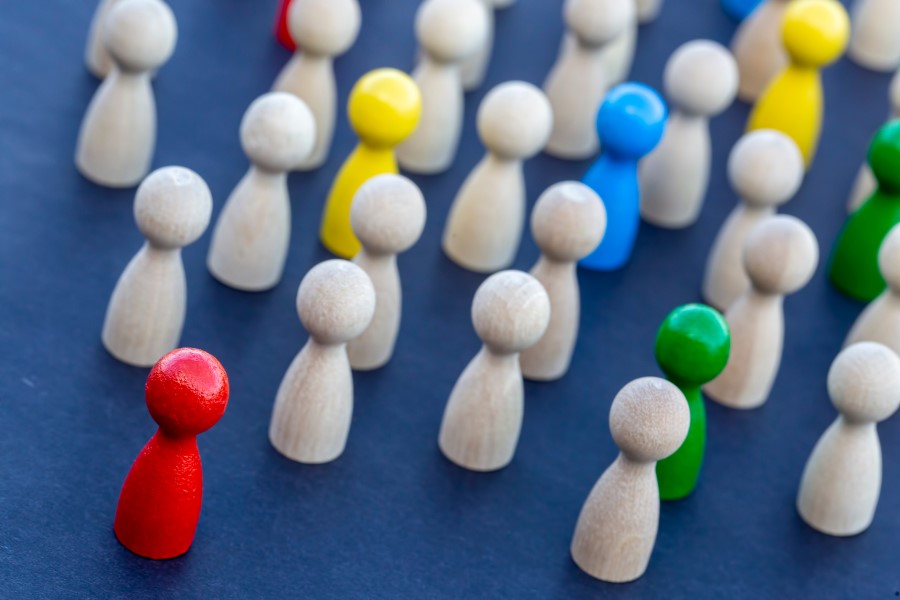How inclusive is your workplace wellbeing programme?

To help businesses continue to build on their commitment to support their people who are Black or from a Minority Ethnic background, the City Mental Health Alliance (CMHA) has created the Mental Health and Race Toolkit. The toolkit outlines four strategic actions and can be downloaded for free.
A “one size fits all” approach will not work for a diverse employee base. For example, the types of mental health issues and quality of support that one group experience may be different to another.
Consider the wellbeing needs of people from Black, Asian and Ethnic Minority communities. A growing body of research points to there being a higher incidence of poor mental health and wellbeing amongst ethnic minority communities. The reasons behind this include the impact of experiencing racism, health inequality, lack of representative support and, in some cultures, a higher level of mental health stigma which prevents individuals from seeking support. This year alone, Black employees have had to deal with potentially triggering conversations around racism because of the death of George Floyd and the Black Lives Matter protests. In addition, data clearly shows that people from Black, Asian and Minority Ethnic backgrounds have been disproportionately impacted by COVID-19, through higher death rates, health anxiety and financial distress, than White people.
Gender identity can also influence mental health. For example, studies suggest that mental health stigma is a bigger barrier to men accessing help. The Mental Health Foundation found that 28% of men had not sought medical help for the last mental health problem they experienced compared to 19% of women. While women are more likely to live with anxiety, their wellbeing is more likely to be impacted by specific challenges such as post-natal depression, domestic abuse or menopause. While in the trans community, The Lancet pointed to the stark fact that 40% of transgender people have attempted suicide.
So, how do you make your wellbeing programme inclusive? To be truly effective, a health and wellbeing programme should put inclusion at its core. In doing so, I suggest you consider the following questions:
Have you engaged your inclusion and diversity team in the design of your wellbeing programme?
Mental health and wellbeing is a key component of the inclusion agenda. There is a strong intersectionality between mental health and different diversity characteristics. Engaging diversity/inclusion specialists along with employee networks/resource groups is an excellent way to gain a better understanding of the different wellbeing and mental health challenges different groups experience and how these may be best supported by your organisation.
How relevant, representative and accessible is mental health support to different groups?
Do your employee assistance programme services, counsellors and Mental Health First Aiders (or equivalent) have diverse representation and understand the wellbeing and mental health challenges of different groups? Developing awareness and providing education is a good place to start. For example, the City Mental Health Alliance (CMHA) training team ran a learning event for more than 150 Mental Health First Aiders, to help improve their awareness of the impact of racism on mental health. The session improved the confidence of attendees in talking about these issues. Again, working with employee networks/resource groups will help improve the accessibility to different populations.
Are you measuring the impact of interventions on different groups?
For example, are women accessing support more than men? If so, why? Analysing utilisation of wellbeing interventions by different groups will help you to understand what does and doesn’t work, and guide future action. The CMHA Thriving at Work Assessment is one example of a tool which helps businesses measure their progress on building a mentally healthy workplace, including how they are doing on supporting the diverse populations within their organisation.
Taking steps such as this will not only help your organisation to build a mentally healthy workplace for all your people, but it will also be a more inclusive and diverse one.
The author is Alison Unsted, director, strategy & operations at City Mental Health Alliance.
For more insight into how to better support the mental health of employees who are Black or from a Minority Ethnic background download CMHA's Mental Health and Race Toolkit.
Article updated on 19/01/2021.






